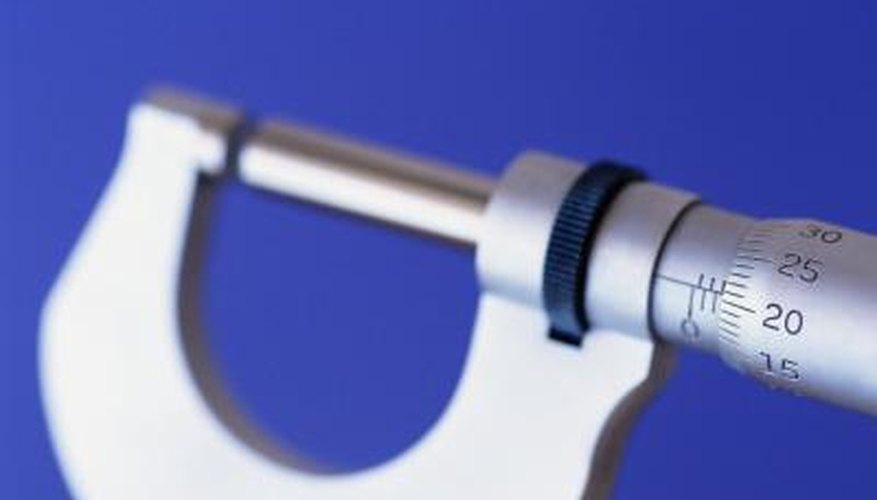A micrometer is an elegant device for making very small measurements, accurate to within a thousandth of an inch. With a micrometer, you can take measurements in both the standard (metric) and imperial systems, though you have to know how to read the markings on the device. A measurement line, like that on a ruler, appears on the "sleeve" of the micrometer, and lines up with a marking on the cylindrical "thimble." Taking imperial measurements with a micrometer requires understanding what fractions of an inch the lines on each different part of the micrometer represent.
- A micrometer is an elegant device for making very small measurements, accurate to within a thousandth of an inch.
- A measurement line, like that on a ruler, appears on the "sleeve" of the micrometer, and lines up with a marking on the cylindrical "thimble."
Place the item you want to measure between the anvil -- the stationary measuring face attached to the micrometer's frame -- and the spindle -- the
Rotate the thimble -- the handle of the micrometer -- until the object is tight between the anvil and the spindle.
Count the number of major numbered divisions revealed on the sleeve. Each one of these represents a tenth of an inch (0.1").
Count the number of minor unnumbered divisions revealed after the closest whole number. Each one is twenty-five thousandths of an inch (0.025").
Read the line on the thimble that lines up with the data line on the sleeve. This gives thousandths of an inch (0.001").
Add everything together. For example, if the sleeve reveals the data line up to three minor divisions past the "2" mark, and lines up with the "13" mark on the thimble, you have two-tenths (0.2") plus seventy-five thousandths (0.075") plus eleven thousandths (0.011"), for a measurement of 0.286 inches.
